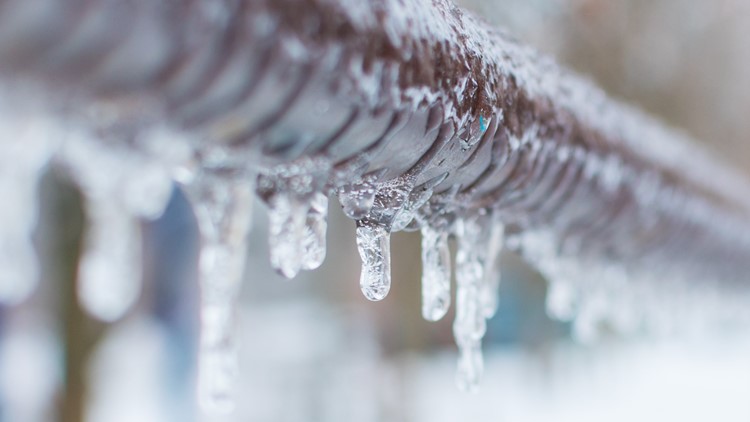Important Advice to Prevent Frozen Pipes in Cold Weather
Important Advice to Prevent Frozen Pipes in Cold Weather
Blog Article
Just how do you feel about How To Avoid Freezing Pipes?

Winter can ruin your pipes, particularly by freezing pipelines. Below's exactly how to stop it from taking place and what to do if it does.
Introduction
As temperatures drop, the risk of frozen pipelines rises, possibly resulting in costly fixings and water damages. Recognizing exactly how to stop icy pipes is important for house owners in cold environments.
Prevention Tips
Protecting at risk pipes
Wrap pipes in insulation sleeves or make use of heat tape to shield them from freezing temperatures. Concentrate on pipelines in unheated or external areas of the home.
Heating methods
Keep interior areas sufficiently warmed, especially areas with plumbing. Open cabinet doors to allow cozy air to distribute around pipes under sinks.
How to recognize icy pipelines
Seek reduced water circulation from faucets, unusual odors or noises from pipes, and visible frost on exposed pipes.
Long-Term Solutions
Architectural modifications
Consider rerouting pipes away from outside walls or unheated locations. Add extra insulation to attics, basements, and crawl spaces.
Updating insulation
Invest in top notch insulation for pipes, attics, and wall surfaces. Correct insulation helps maintain regular temperatures and lowers the risk of icy pipelines.
Shielding Exterior Pipes
Garden pipes and exterior faucets
Separate and drain yard tubes before winter season. Install frost-proof faucets or cover exterior faucets with insulated caps.
Understanding Icy Pipelines
What triggers pipes to ice up?
Pipelines freeze when revealed to temperature levels listed below 32 ° F (0 ° C) for expanded durations. As water inside the pipes freezes, it expands, putting pressure on the pipe wall surfaces and possibly triggering them to burst.
Risks and damages
Icy pipes can cause supply of water disturbances, property damages, and expensive repairs. Burst pipelines can flooding homes and cause extensive architectural damage.
Indications of Frozen Piping
Determining frozen pipes early can avoid them from rupturing.
What to Do If Your Pipes Freeze
Immediate actions to take
If you believe icy pipes, maintain faucets available to ease stress as the ice thaws. Use a hairdryer or towels soaked in warm water to thaw pipelines slowly.
Conclusion
Avoiding icy pipelines calls for aggressive procedures and quick actions. By comprehending the reasons, indicators, and safety nets, homeowners can safeguard their plumbing during winter.
5 Ways to Prevent Frozen Pipes
Drain Outdoor Faucets and Disconnect Hoses
First, close the shut-off valve that controls the flow of water in the pipe to your outdoor faucet. Then, head outside to disconnect and drain your hose and open the outdoor faucet to allow the water to completely drain out of the line. Turn off the faucet when done. Finally, head back to the shut-off valve and drain the remaining water inside the pipe into a bucket or container. Additionally, if you have a home irrigation system, you should consider hiring an expert to clear the system of water each year.
Insulate Pipes
One of the best and most cost-effective methods for preventing frozen water pipes is to wrap your pipes with insulation. This is especially important for areas in your home that aren’t exposed to heat, such as an attic. We suggest using foam sleeves, which can typically be found at your local hardware store.
Keep Heat Running at 65
Your pipes are located inside your walls, and the temperature there is much colder than the rest of the house. To prevent your pipes from freezing, The Insurance Information Institute suggests that you keep your home heated to at least 65 degrees, even when traveling. You may want to invest in smart devices that can keep an eye on the temperature in your home while you’re away.
Leave Water Dripping
Moving water — even a small trickle — can prevent ice from forming inside your pipes. When freezing temps are imminent, start a drip of water from all faucets that serve exposed pipes. Leaving a few faucets running will also help relieve pressure inside the pipes and help prevent a rupture if the water inside freezes.
Open Cupboard Doors
Warm your kitchen and bathroom pipes by opening cupboards and vanities. You should also leave your interior doors ajar to help warm air circulate evenly throughout your home.

I'm just very occupied with Helpful Tips to Prevent Frozen Pipes this Winter and I hope you enjoyed reading the new post. Remember to take the opportunity to promote this blog entry if you appreciated it. Thanks a bunch for being here. Don't forget to stop by our website back soon.
Schedule Your Service Report this page